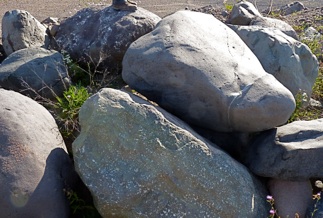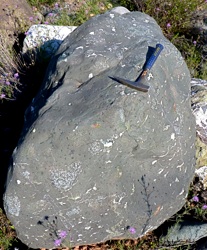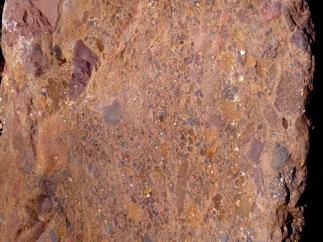it is very easy to build confidence in rock identification with this resource. The rocks are mostly either red or black. This is an enormous clue, because it is so obvious. Basalt is black and the local conglomerates, sandstones and rhyolite are all red. Conglomerates are texturally obvious, so that any observer can easily recognize that they contain fragments of other rocks. So in their first few minutes on site a beginning earth scientist can feel that they can deal with the complexity of almost all the rocks they are likely to see during field investigations of the keweenaw.
then one can begin to teach about the different varieties of each rock. The boulders are arranged in family groups, where rock types are similar. students can be asked to characterize the groups and to describe the differences. we have resisted labeling the rocks, to facilitate this use as a beginning of rock identification. we think this might be the most widely used application.





